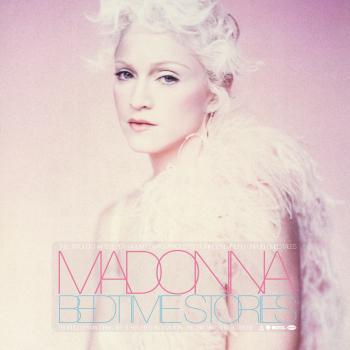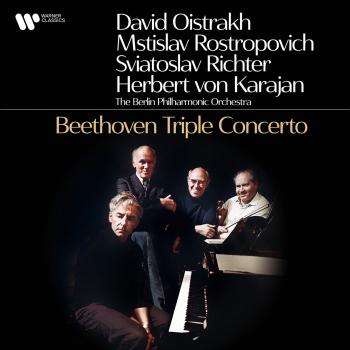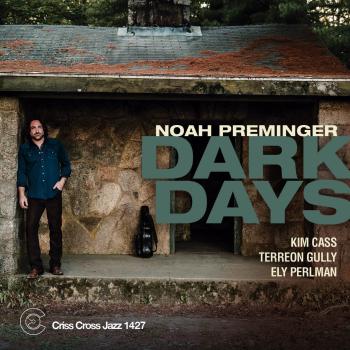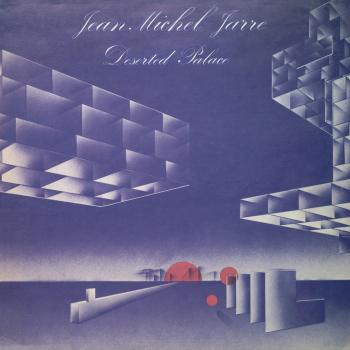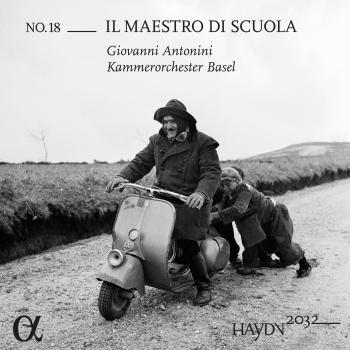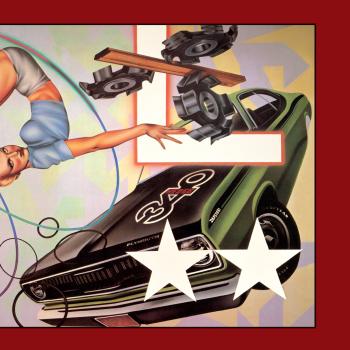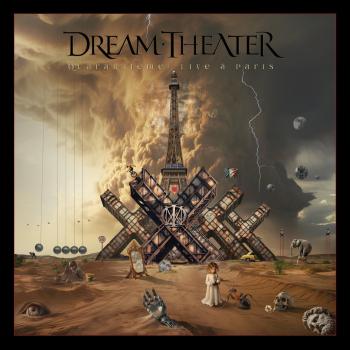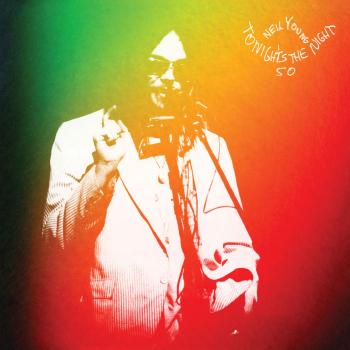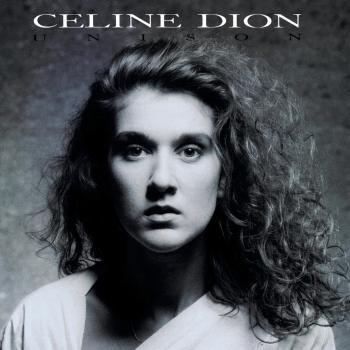
Jerry Lee Lewis: The Knox Phillips Sessions: The Unreleased Recordings Jerry Lee Lewis
Album Info
Album Veröffentlichung:
2014
HRA-Veröffentlichung:
06.11.2014
Das Album enthält Albumcover
Entschuldigen Sie bitte!
Sehr geehrter HIGHRESAUDIO Besucher,
leider kann das Album zurzeit aufgrund von Länder- und Lizenzbeschränkungen nicht gekauft werden oder uns liegt der offizielle Veröffentlichungstermin für Ihr Land noch nicht vor. Wir aktualisieren unsere Veröffentlichungstermine ein- bis zweimal die Woche. Bitte schauen Sie ab und zu mal wieder rein.
Wir empfehlen Ihnen das Album auf Ihre Merkliste zu setzen.
Wir bedanken uns für Ihr Verständnis und Ihre Geduld.
Ihr, HIGHRESAUDIO
- 1 Bad, Bad Leroy Brown 07:04
- 2 Ragged but Right 03:56
- 3 Room Full of Roses 03:49
- 4 Johnny B. Goode / Carol 06:17
- 5 That Kind of Fool 02:49
- 6 Harbor Lights 02:57
- 7 Pass Me Not, O Gentle Savior 03:46
- 8 Music! Music! Music! / Canadian Sunset 04:28
- 9 Lovin' Cajun Style 03:23
- 10 Beautiful Dreamer 04:47
Info zu Jerry Lee Lewis: The Knox Phillips Sessions: The Unreleased Recordings
Phillips Recording looks much as it did at its grand opening in 1960. That was the year Sam Phillips, then president of Sun Records, closed the old studio where he’d recorded Elvis, Johnny Cash, Jerry Lee Lewis, B.B. King and Howlin’ Wolf to open a new studio two blocks north. Even after Phillips sold Sun, he kept the new studio. His sons, Knox and Jerry, swear they’ll never relinquish it.
Ill health has curtailed Knox’s appearances at the studio of late, but there were years when he was there pretty much every day. When he felt those in his presence were deserving, he would play the Jerry Lee Lewis tapes he’d produced in the late 70s. Although no longer on Sun, Jerry Lee returned often to Phillips Recording. He was coming off a 10-year string of country hits at a time when progress in Nashville was gauged in slight adjustments to the formula. Nashville records were designed neither to excite nor to offend, bringing to mind a line from the Book of Revelations that Jerry Lee loved to paraphrase as you must be hot or cold, for if you are lukewarm the Lord will spew you out of His mouth. For a man conversant with popular music in all its manifestations, it all came down to one thing: God-given talent. Jerry Lee had it. At Phillips Recording, he once again gave some sense of all he knew and all he could do, just as he’d done at Sun in the 50s. And the piano, always de-emphasised at Mercury, was once again front and centre. Those who heard Knox’s tapes implored him to release them. That time has now come.
“Jerry Lee was always my favourite artist,” says Knox. “He can be ornery, but he has the sweetest heart in the world. After he left Sun we got reacquainted in the studio. His Mercury sessions only gave an inkling of what he could do. They found great songs, but they were just country. They had stockholders to answer to, so they wouldn’t make any giant excursions, but Sun was always about differentness, and so am I.
“One thing I took from my dad was that producing a record means creating a situation where a genius can play with reckless abandon. Like Dan Penn always says, I’ll go out on a limb, and if it breaks, that’s OK with me. Jerry Lee hadn’t captured that reckless abandon for a long time before this. I’d play these tapes for people I thought ought to hear them, but I wouldn’t release them out of respect for Jerry Lee, because I didn’t want to compete with whatever he had going on. Now the time feels right for both of us.”
Bless Knox Phillips for embracing all that Jerry Lee Lewis is, and for creating the atmosphere conducive for him to express it. Sounds simple enough, except that no one but his father did it before ... and no one has done it since.
'Get the Killer down on tape right and we'll make millions,' growls Jerry Lee Lewis at the beginning of The Knox Phillips Session. Jerry Lee proceeds to slide into an exceptionally sleazy version of Jim Croce's 'Big Bad Leroy Brown,' which he riddles with references to strippers and Watergate. He calls himself a motherhumper, he calls Nixon a motherhumper, but he doesn't hesitate to sing 'shit,' he sounds about five sheets to the wind and concludes the whole shambling thing by slurring 'I have struck again with a 14-million-selling underground record.' That's a pretty good tip-off to what The Knox Phillips Sessions are. Recorded by Knox Phillips, the son of Sun founder Sam, in either the mid- or late '70s -- roughly around the time Killer was concluding or had concluded his contract with Mercury -- it's hard to imagine there were ever commercial considerations for these sessions. They're too loose, Jerry Lee sounds too rough (which is just a kind way of saying he often sounds drunk), he spends a fair amount of time threatening to kick his band's ass, the repertoire draws heavily from songs he's sung many, many times before, including songs by Chuck Berry, Stephen Foster, hymns, and 'Room Full of Roses,' the old George Morgan tune he takes at a speed similar to his cousin Mickey Gilley's hit version. All of these things doomed these recordings to stay unreleased for years but they're also the reason to hear The Knox Phillips Sessions now that they've been released from the vaults. It's hard to say that this record captures Jerry Lee Lewis at either his purest or best -- it doesn't have the fury of either his live '60s sessions or his Sun sessions, while the finesse of the studio Mercury sides are missed; here, his playing is sloppy and his rhythm section has a tendency to plod -- but it is thoroughly him in its attitude and aesthetic. He bends all these songs to suit where he's at in the moment, the songs finding a different life according to when he sings them, and he just happened to be soused, vulgar, and nasty at this point in the '70s. Lewis isn't as demented on this 'underground' record as David Allan Coe is on his, but that's because the Killer wasn't trolling: he was just recording songs he wanted to sing when he was half blitzed in the studio late at night. This makes it a throwaway but one that's special: it's Jerry Lee Lewis performing for no one but himself and no matter how ragged it is, that's something to cherish.“ (Stephen Thomas Erlewine)
Jerry Lee Lewis, piano
Recorded at Sam Phillips Recording Service, Memphis, TN
Engineered by Knox Phillips
Produced by Colin Escott, Knox Phillips
Digitally remastered
Jerry Lee Lewis
Ein halbes Jahrhundert ist es schon her, dass Jerry Lee Lewis mit „Whole Lotta Shakin’ Goin’ On“ und „Great Balls of Fire“ das erste Mal die Spitze der amerikanischen Pop-, Country- und R&B-Charts stürmte. Während die ikonoklastischen Auftritte jener Zeit für Millionen von Fans immer noch das wahre Wesen des Rock’n’Roll definieren, zieht Jerry Lee höchstpersönlich mit seiner heißen Mischung aus Blues, Country, Gospel und ganz eigenen Klängen nach wie vor rund um die Welt und begeistert die Massen. Auf Last Man Standing, dem seit über einem Jahrzehnt ersten neuen Studio-Album des „Killers“, ist der größte Showman des Rock’n’Roll in bester Gesellschaft mit 22 Superstars der Rock-, Blues- und Country-Musik, aktuellen Künstlern ebenso wie alten Hasen, und wartet mit wunderbaren Duetten und einer schier traumhaften Setlist klassischer Songs auf, von denen viele vielleicht gar nicht einmal existierten, hätte Jerry Lee Lewis nicht damals in den 1950ern sämtliche Barrieren durchbrochen. Geprägt von einem Leben zwischen Triumph und Tragödie, singt und spielt Jerry Lee Lewis seine Songs mit der Abgeklärtheit eines Mannes, der alles gesehen hat, und der cleveren Zuversicht eines Künstlers, der weiß, dass Musik – und die wahren Gefühle, die sie transportiert – das Allerwichtigste überhaupt sind. Mit dabei auf Last Man Standing sind Jimmy Page ('Rock and Roll'), B.B. King ('Before The Night Is Over'), Bruce Springsteen ('Pink Cadillac'), Mick Jagger (Gesang) und Ronnie Wood (Pedal Steel-Gitarre) ('Evening Gown'), Neil Young ('You Don't Have To Go'), Toby Keith ('Old Glory'), John Fogerty ('Travelin' Band'), Keith Richards ('That Kind of Fool'), Robbie Robertson ('Twilight'), Merle Haggard ('Just A Bummin' Around'), Kid Rock ('Honky Tonk Woman'), Rod Stewart ('What's Made Milwaukee Famous'), Willie Nelson ('Couple More Years'), George Jones ('Don't Be Ashamed of Your Age'), Eric Clapton ('Trouble In Mind'), Little Richard ('I Saw Her Standing There'), Delaney Bramlett ('Lost Highway'), Buddy Guy ('Hadacohl Boogie'), Don Henley ('What Makes the Irish Heart Beat') und Kris Kristofferson ('The Pilgrim'). Jerry Lee Lewis, der seine erste Platte im Jahr 1954 aufgenommen hat, ist tatsächlich der Last Man Standing, der letzte Überlebende aus der legendären Riege der Helden von Sun Records, zu denen auch Elvis Presley, Johnny Cash, Roy Orbison und Carl Perkins gehörten, die gemeinsam mit Chuck Berry und Little Richard durchaus als die Gründungsväter des Rock’n’Roll bezeichnet werden können. Jerry Lee Lewis wurde am 29. September 1935 in eine arme Familie in Ferriday, Louisiana, hineingeboren und entwickelte schon mit 10 ein ganz eigenes, wildes Piano-Spiel, indem er die Boogie-Woogie-Sounds aus dem Radio mit dem rauchigen Südstaaten-R&B vermischte, der aus Haney’s Big House dröhnte – der Kneipe seines Onkels. Später schrieb sich Jerry Lee am Southwestern Bible College in Waxahatchie, Texas, ein. Sein Aufenthalt dort war aber nicht von langer Dauer, denn das verlockende Erklingen der Musik führte ihn auf einen Pfad, der die Welt verändern sollte... Jerry Lee Lewis hat durch die Synthese von R&B-, Boogie-Woogie-, Gospel- und Country-Elementen einen ureigenen Sound geschaffen und wurde damit zu einer festen Größe des aufkommenden Rock’n’Roll, der die Big Band-Klänge der populären Musik förmlich aufsaugte und gleichzeitig wegfegte. 1956 kam Jerry Lee schließlich in den namhaften Sun Studios von Sam Phillips unter, wo er seine erste Chart-Single – eine aufgemotzte Adaption von Ray Prices „Crazy Arms“ – aufnahm und auch als Session-Musiker tätig war. Eines Tages wurde Jerry Lee, während er auf einer der Carl Perkins-Sessions Piano spielte, Teil einer improvisierten Jam-Session mit Perkins, Johnny Cash und dem jungen Elvis Presley. Der Tontechniker ließ das Band mitlaufen, und diese Session sollte die einzige Aufnahme des legendären „Million Dollar Quartett“ werden. Mit der Veröffentlichung von „Whole Lotta Shakin’ Goin’ On“ und „Great Balls of Fire“ im Jahre 1975 eroberte der schräge junge Musiker Jerry Lee Lewis die Pop-, R&B- und Country-Charts und landete dank seiner Auftritte in den Filmen „High School Confidential“ und „Jamboree“ auf der Leinwand. Elvis sagte einmal, als er Jerry Lee Lewis auf der Bühne sah, wenn er so Klavier spielen könnte, würde er sofort mit dem Singen aufhören. Von Anfang an gelang es Jerry Lee Lewis, mit seiner unermüdlichen Zuversicht und unstillbaren Energie unzählige Fans ebenso wie Kritiker zu inspirieren. Seine legendäre Karriere wurde begleitet von Ruhm und Skandal: Er war das Enfant terrible schlechthin, die erste Legende des Rock’n’Roll, und er ebnete den Weg für alle, die nach ihm kamen – von den Rolling Stones bis hin zu Green Day. Von Johnny Cash als ein American Original bezeichnet und von Roy Orbison als ungeschminktester Künstler in der Geschichte des Rock’n’Roll gerühmt, handelt es sich bei Jerry Lee Lewis um einen Ausnahmemusiker mit einer ungewöhnlichen Vielseitigkeit. Abgesehen von seinen Rock’n’Roll-Hits stürmte er mit einer ganzen Reihe von Country-Songs die Charts, etwa mit „Another Time, Another Place“ im Jahre 1968. Er gehörte zu den ersten Künstlern, die 1986 in die Rock & Roll Hall of Fame aufgenommen wurden. Im gleichen Jahr kehrte Jerry Lee in die Sun Studios in Memphis zurück und nahm dort zusammen mit Roy Orbison, Johnny Cash und Carl Perkins das Album „Class of 55“ auf. 1987 wurde „Interviews from the Class of ´55 Recording Sessions” mit einem Grammy in der Kategorie „Beste gesprochene oder Nicht-Musik-Aufnahme“ ausgezeichnet. Jerry Lee Lewis hat niemals aufgehört, auf Tour zu gehen. 50 Jahre nach seinem ersten Hit und mit nunmehr 70 Jahren ist er immer noch ein explosiver und wilder Musiker, der mit Raffinesse und Spaß das Publikum in aller Welt begeistert. Im Februar 2005 wurde Jerry Lee Lewis von der National Academy of Recording Arts & Sciences (NARAS) der Lifetime Achievement Award verliehen. Last Man Standing ist Jerry Lee Lewis in Reinform, eine bedeutende und monumentale Sammlung puren Rock’n’Rolls vom letzten wahren Rock’n’Roller.
Dieses Album enthält kein Booklet

